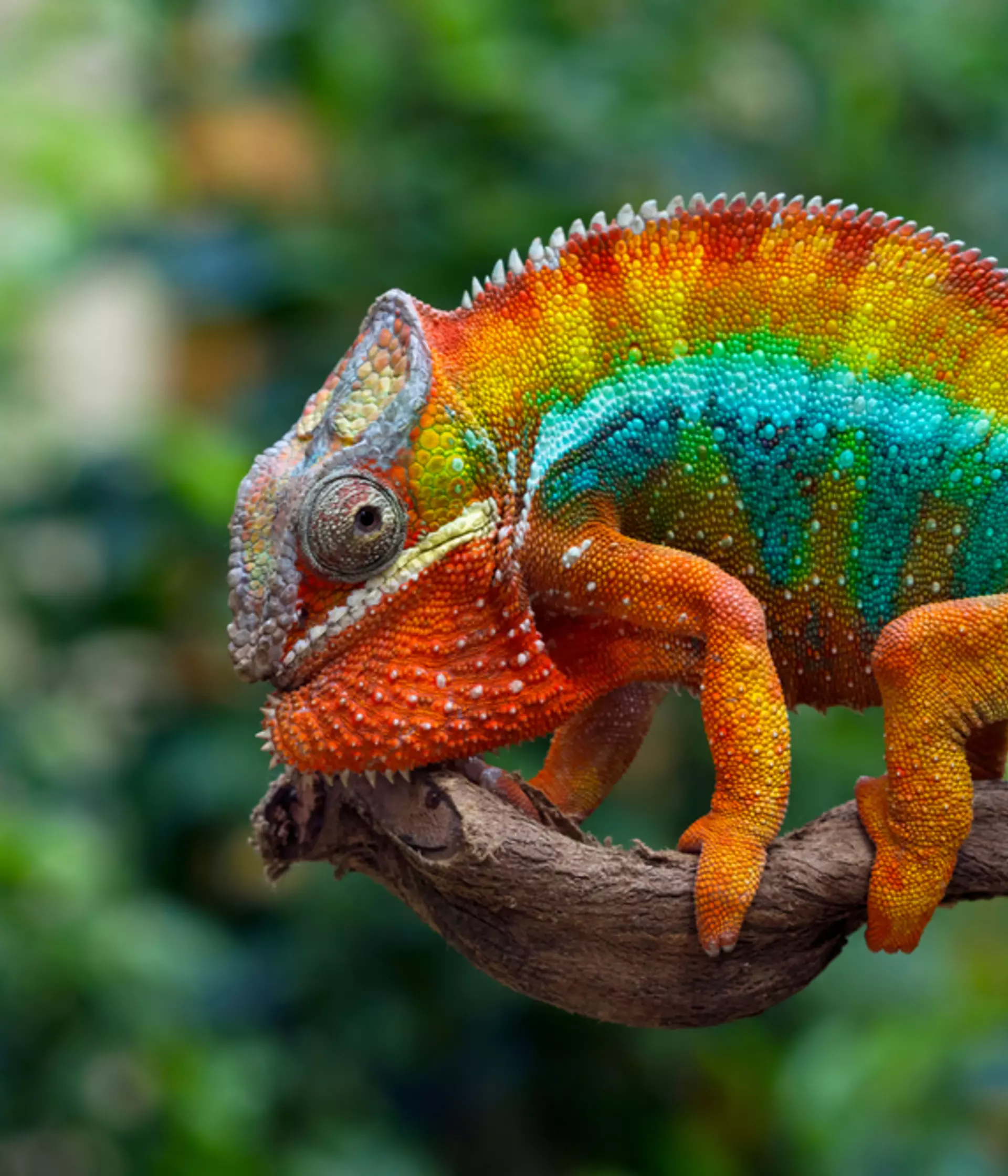Chameleon facts
The top layer of a chameleon’s skin contains two layers of special cells called iridophores, which, in turn, contain pigments and nanocrystals. These nanocrystals are in a variety of sizes, shapes and arrangements and the chameleon can alter these arrangements to reflect light in different ways, enabling them to change colour. They control the nanocrystal arrangement by relaxing or exciting the skin, so that the crystals move closer together or further apart.
People think that chameleons change colour for camouflage, and whilst that is sometimes true, the primary role of their incredible colour-changing ability is associated with social signalling and communication, or as a response to changes in their environment, like temperature or humidity.
Chameleon tongue
A chameleon’s tongue is also highly modified. They can project their tongues to distances longer than their body-length. They also have a very wide field of vision, thanks to their unusual eyes, which feature fused upper and lower eyelids containing a small aperture which the pupils of their eyes can see through. Each eye can pivot and focus independently, allowing them to view two objects simultaneously.
Baby panther chameleon
A tiny 3cm-long baby chameleon hatched at the Zoo and was photographed by Zookeepers perching on pencils and scampering around. Baby chameleons can only change its hue from dark brown to light brown at night-time, but as they grow into an adult they develop their famous colour changing properties.
Our aquarium
Fish and reptiles living together
Our Aquarium is a round-the-world journey through ten of the planet’s most extreme aquatic habitats, and a base for our leading conservation work protecting life everywhere.
Panther chameleon threats
Habitat degradation, which can be caused by climate change is becoming a threat. Although they are the in demand Malagasy chameleon in the international pet trade, current levels of harvesting are sustainable.
